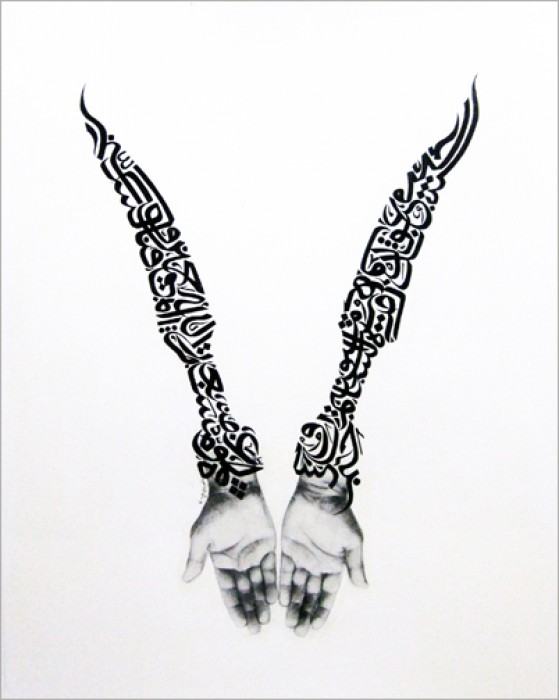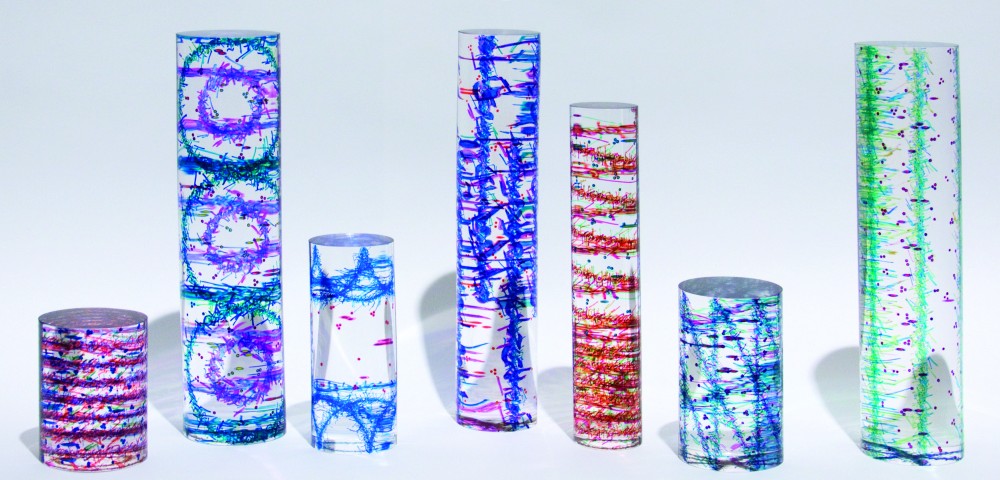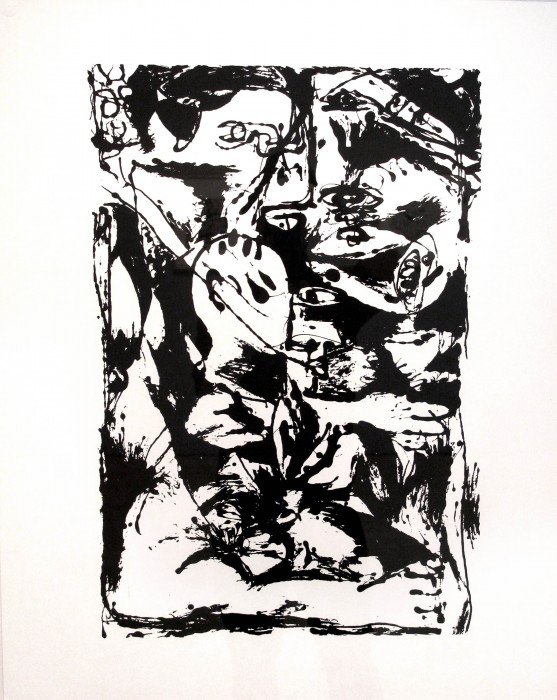INHALE is a cultural platform where artists are presented, where great projects are given credit and readers find inspiration. Think about Inhale as if it were a map: we can help you discover which are the must-see events all over the world, what is happening now in the artistic and cultural world as well as guide you through the latest designers’ products. Inhale interconnects domains that you are interested in, so that you will know all the events, places, galleries, studios that are a must-see. We have a 360 degree overview on art and culture and a passion to share.

“Calligraffiti: 1984-2013,” an upcoming show at the Leila Heller Gallery in Chelsea opening Sept. 5.
It will explore the relationship between graffiti and calligraphy with the work of nearly 50 artists, from Jackson Pollock and Jean-Michel Basquiat to Keith Haring and his protégé “LA II” (as Angel Ortiz is known). Many of the artists are Middle Eastern, including Shirin Neshat and Hossein Zenderoudi, and several are street artists, like the French-Tunisian star eL Seed.

EL SEED
The shape of the city changes faster the heart of a human being, 2013
photo leilahellergallery.com
The show essentially updates “Calligraffiti,” an exhibition that he and Ms. Heller collaborated on in 1984, back when he was a Citibank art adviser with a passion for street art, and she was an Upper East Side dealer specializing in art from the Middle East, primarily Iran.
Curated by Mr. Deitch, the 1984 show juxtaposed graffitists like Fab Five Freddy with Mr. Zenderoudi and modernist scrawlers like Cy Twombly and Jean Dubuffet. (Mr. Deitch came up with the idea, he said, while he was between apartments and sleeping in Ms. Heller’s gallery.)
This time, Mr. Deitch served as Ms. Heller’s sounding board, rather than curator. But he is excited about the new possibilities for street art offered by the turmoil in the Middle East, especially as exemplified by eL Seed, who started as a street artist and is now working on a major commission from the Qatar Museums Authority to paint a series of tunnels in Doha.
“He is in a very genuine way working in this fusion between a calligraphic technique coming out of Arabic script,” Mr. Deitch said, “and an awareness of international graffiti language. When we did the show originally in 1984, there wasn’t anyone like this.” But now, he added, “there is this actual fusion of the two traditions.”
In the catalog he wrote that, ”Graffiti has become an important part of the imagery that has defined the Arab Spring.” While New York’s early taggers had to rely on subway cars to carry their messages, he added, “today new communications platforms like Instagram and YouTube have given street art a new resonance,” instantly communicated around the world.
Mr. Deitch is already at work on several independent projects beyond the one or two he intends to complete for the Museum of Contemporary Art. He would not talk about them until he had “concrete plans with the dates, space.” But yes, he confirmed, they will be in New York.
For centuries, calligraphers from the Middle East have visually transcribed verses from the Ayah and concepts surrounding Divine Infinity on public buildings and mosques by presenting the written word as art. In modern times, movements ranging from Dada, Surrealism, Tachism, and Abstract Expressionism have all incorporated elements of writing and language into their abstractions. Most recently, contemporary artists such as Hossein Zenderoudi, Parviz Tanavoli, Hadieh Shafie, and Pouran Jinchi, whose work will be on view, have transformed traditional Arabic script in order to create new abstract shapes and gestural marks, augmented by color, poetry, or rhyme which bridge distinctions between nationalities, generations, and beliefs.

NASSER AL SALEM
God Will Raise Those Who Have Believed And Those Who Were Given Knowledge By Degrees, 2012
photo leilahellergallery.com
via artsbeat.blogs.nytimes.com, leilahellergallery.com.































































